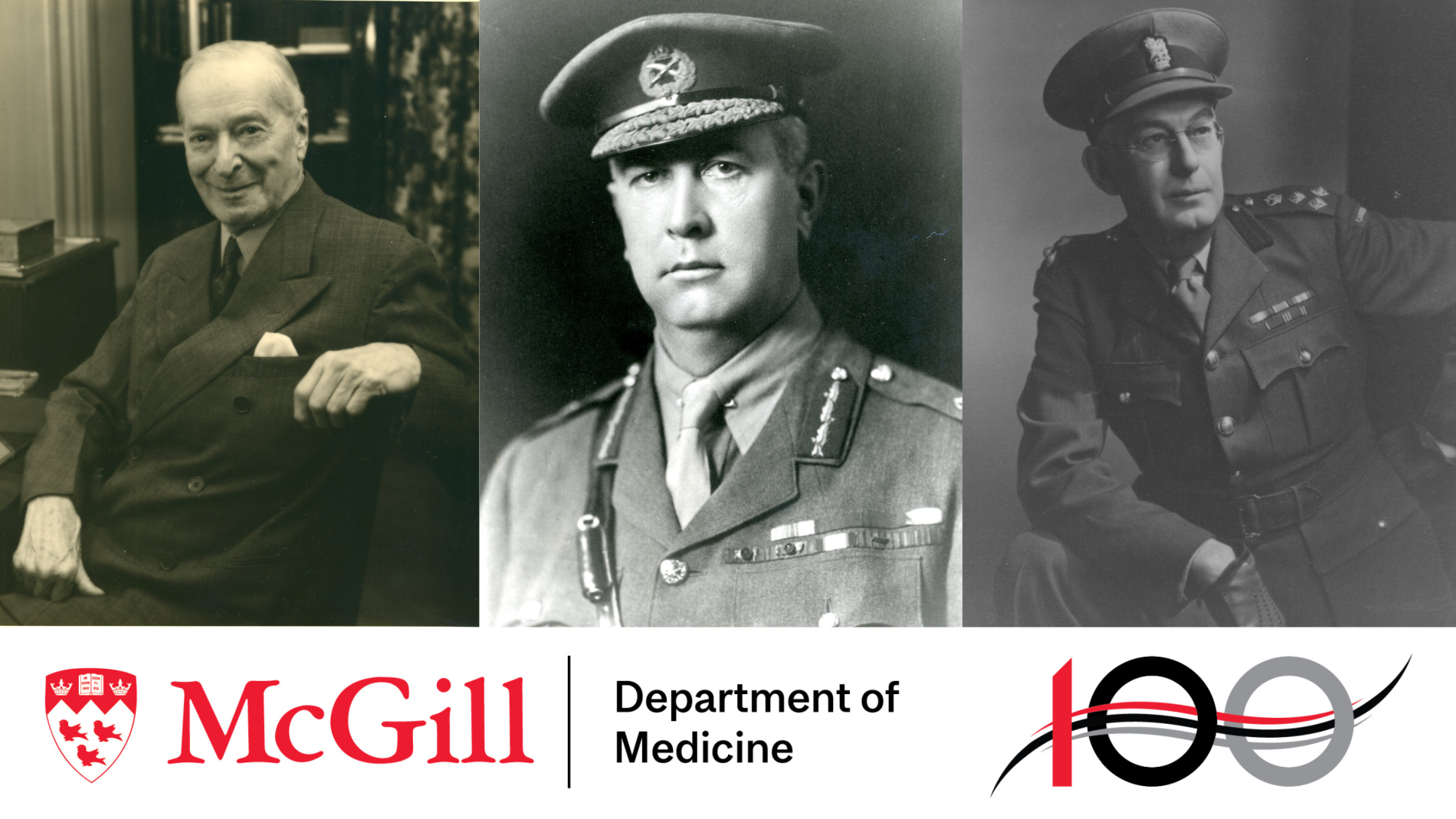This year the McGill Department of the Medicine and the MUHC Art and Heritage Centre have teamed up to celebrate the 100th anniversary of the establishment of the University Medical Clinic; the first research department in an academic hospital in Canada.
The early twentieth century saw the McGill Faculty of Medicine at a crossroads. In the face of challenges brought by the First World War, they adhered to tradition, deeming it an inopportune time for reform akin to those happening in other institutions, where science and practice were becoming equally essential parts of academic training. Risking falling short of its established reputation if it did not evolve, medical visionaries moved McGill in the direction of early twentieth-century philosophical shifts by planting seeds that would eventually lead to the establishment of a University Medical Clinic by 1924.
Luminaries like Sir William Osler championed the cause of comprehensive medical education, collaborating with contemporaneous leaders in steering a paradigm shift that aimed to foster greater synthesis of research and practice. The impact of World War I and its’ acceleration of medical advancement added to this widespread acceptance. The Rockefeller Foundation, through its new branch of Medical Education, played a pivotal role in this transformation by globally monitoring and financially supporting medical schools and universities. In the quest to enhance the Canadian context, the Foundation sought a university with the ambition to implement these changes, a task more challenging than initially anticipated after surveying institutions from each province. Osler's letters to the Rockefeller Foundation in 1919, shortly before his death, served as a catalyst not only for the Foundation's pledge of $5 million in support of Canadian medical education that same year, but also for its eventual support of reform at McGill. During their visit to Montreal in 1920 to plan for the endowment of McGill's Pathological Institute, Foundation representatives Dr. Richard Pearce and George Vincent met with Martin, making it clear that they were interested in supporting his eventual plans for reform.
By 1923, Charles F. Martin, now serving as McGill's inaugural full-time Dean, had found an ally in Principal Arthur Currie, who shared his vision for reforming the medical school. This encompassed the appointment of a single chairman of medicine and the establishment of a clinical research unit at the Royal Victoria Hospital (RVH). This reform aimed to further elevate McGill as a world-class medical school and create an atmosphere of synergy and collaboration across its two teaching hospitals, the Royal Victoria and the Montreal General Hospital. He had longtime prefaced his mentee and colleague, Dr. Jonathan Campbell Meakins, as the person with the tenacity and skillset for this role. Confident in the policies in place at McGill and the convictions of all parties involved, the Rockefeller Foundation committed to fund these initiatives for five years.
Dr. Meakins exemplified the multifaceted physician to lead these initiatives. After earning his medical degree from McGill in 1904, Meakins gained diverse experience in the US, Canada, and the UK, linking laboratory studies with clinical practice and formally training in electrocardiology. Upon returning to Montreal in 1914, he introduced the second ECG in Canada at the RVH. During World War I, Meakins, recommended by Osler, Sir Clive Albutt and Sir James Mackenzie, studied the "irritable heart" of soldiers at the Military Heart Hospital in Hampstead. Additionally, his interest in respiratory physiology led to a lab at Taplow Military Hospital, studying effects and treatments of poisonous gases with Osler and Dr. John Haldane as consultants. His wartime research on soldiers' health conditions garnered recognition. Called back to the RVH during the 1918 influenza epidemic, Meakins, after 4 ½ years abroad, had become a sought-after leader in medicine in the UK and Canada. However, without an effective platform to advance his aspirations, he accepted the newly created position of the Christison Chair of Therapeutics at Edinburgh University in 1919 where he successfully linked medical care with the clinical laboratory. His vision flourished in Edinburgh, and it solidified his reputation as a major leader in the field.
With the encouragement and support of Martin, Principal Arthur Currie and Pearce, he was presented with the opportunity to return to McGill to establish an ideal scientific, teaching and clinical model based on what had been established in Edinburgh. In 1924, he was appointed Director of the new University Medical Clinic, Professor, Chair of McGill’s Department of Medicine, and Physician-in-Chief at the RVH. This reform embodied the “spark” Meakins felt McGill needed to elevate the medical school as a global center for research and model for Bedside to Bench to Bedside.
Meakins’ return to Montreal evidences the progress and reform, propelled by Martin and Currie and supported by the ideals of Osler and the Rockefeller Foundation, during a transformative time for the study of medicine in Canada. Meakins’ visionary approach to integrating sciences into medical practice at McGill University set the stage for the evolution of medical education and research in the country. The University Medical Clinic at the RVH, under his leadership, remains a historical landmark in the Canadian medical landscape, celebrating its centenary in 2024.
